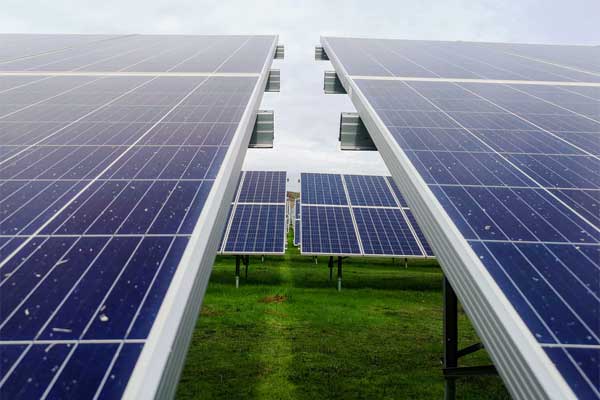- Experts are looking to increase the efficiency of CdTe modules.
- CdTe modules have the potential to be competitive on efficiency but at a lower manufacturing cost than silicon-based modules, which use mono-crystalline silicon (c-Si).
Silicon-based solar modules dominate the current market. However, they are expensive and have a high carbon footprint.
A new generation of modules is emerging made using a chemical compound known as cadmium telluride (CdTe) and over 25 GW has already been installed.
Solar panel efficiency refers to a panel’s ability to convert energy from the sun into electrical energy.
Experts are looking to increase the efficiency of CdTe modules as it has the potential to be competitive on efficiency but at a lower manufacturing cost than silicon-based modules, which use mono-crystalline silicon (c-Si).
The carbon footprint of CdTe is also half that of c-Si modules and end-of-life module recycling for CdTe modules is guaranteed.
Untreated CdTe has very low efficiency and is typically about only 1%. However, when CdTe undergoes a chlorine treatment – which involves treating CdTe with cadmium chloride at 420oC for 20 minutes – its efficiency jumps dramatically. The record cell efficiency is 22%.
Until now, how or why chlorine improves efficiency so drastically was not fully understood.
For the first time, Loughborough University’s Dr. Pooja Goddard and Professor Roger Smith, along with Dr Peter Hatton and Dr. Michael Watts (Ph.D. graduates of Loughborough), have modelled the mechanism by which chlorine improves the efficiency of CdTe.
The study is a joint effort with Professor Mike Walls’ experimental research group housed at Loughborough’s Centre for Renewable Energy Systems Technology (CREST).
It is hoped the findings, published today in Nature Communications, will improve understanding of how chlorine enhances electrical performance and lead to further tuning, resulting in even higher efficiencies (>25%). This would help CdTe solar modules to produce even lower-cost electricity.
Research findings and the missing piece
When trying to understand why chlorine improves efficiency, the main observation from previous studies was that defects – known as ‘stacking faults’ – were removed after chlorine treatment.
For a long time, it was believed that stacking fault removal was responsible for the efficiency increase. However, theoretical calculations by the Loughborough group showed that the stacking faults had no effect on cell efficiency.
Previous research from the team showed that instead, it is regions of the material called ‘grain boundaries’, where crystals of different orientation join together, that are responsible for the poor cell efficiency.
In their latest study, Dr Goddard‘s group used quantum mechanical methods to understand the role of chlorine in both improving efficiency and also in removing stacking faults.
Grain boundaries are very complex and full of defects that can act as traps for electrons (subatomic particles that act as the primary carrier of electricity in solids), making these areas ‘active’.
In a process known as ‘passivation’, chlorine is able to deactivate some of the traps and make the grain boundaries less active – therefore increasing the efficiency of CdTe.
The missing piece was understanding how the stacking faults disappear.
The new paper shows that if there is enough chlorine in the grain boundaries, a cascade mechanism is triggered that structurally removes the stacking faults.
“Although the stacking faults disappearance is not what causes the improved efficiency, if they have disappeared then that is the signal that the CdTe cell is going to have good performance. This has never been shown before”, said Dr Goddard when asked of the paper’s importance.
She continued: “We are very excited to have our work published in Nature Communications, which showcases our hypothesis on how chlorine is able to not only improve the efficiency of CdTe cells but also remove crucial defects.
“The next steps will be to see how further improvements can be made by looking at doping the CdTe with other elements to push for >25% efficiency. Our ongoing collaboration with CREST is going to be looking also to optimize the interfaces between CdTe and the front and back contacts.
“Each small gain in efficiency means the technology is becoming more competitive against the current silicon technology.”
—
Publication Referenced in the Article:
Peter Hatton et al, Chlorine activated stacking fault removal mechanism in thin film CdTe solar cells: the missing piece, Nature Communications (2021). DOI: 10.1038/s41467-021-25063-y
—
This article was written by Loughborough University. It was originally published here.







Comments